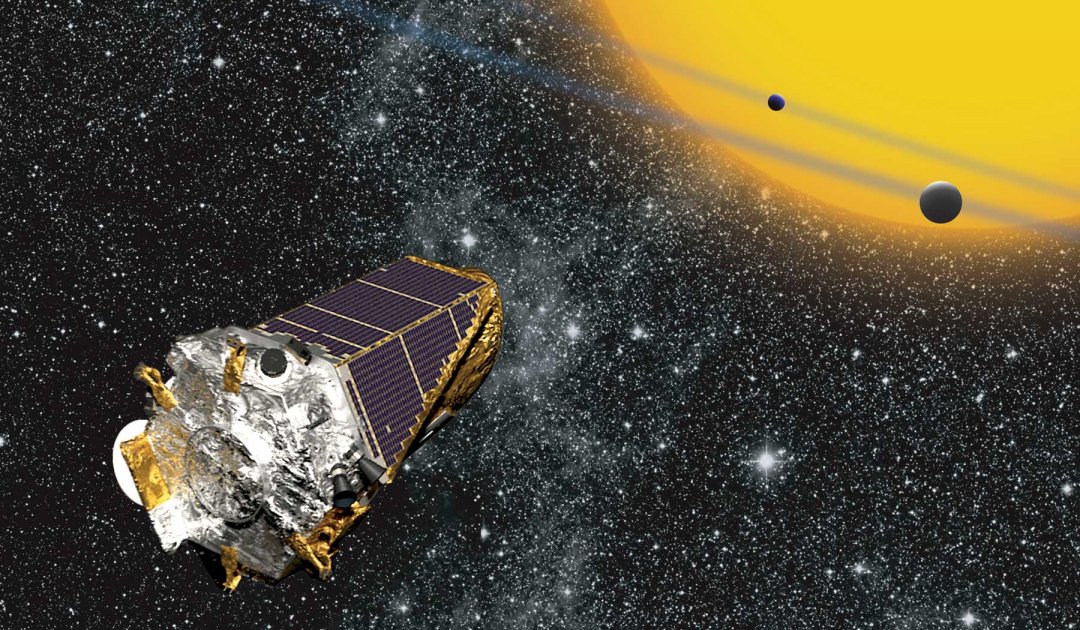Google's machine learning technology helps NASA discover exoplanets

A few days ago, NASA announced the interesting results of a partnership with the telecommunications giant Google. We are talking about long-term cooperation, the purpose of which is to use the capabilities of machine learning to process the huge amount of data obtained by NASA from the Kepler orbital telescope. One of such results can be called the detection of the eighth in place of the exopletes in the Kepler-90 system .
The planet itself is the smallest in this system. Kepler-90 is located 2.5 thousand light years from Earth. The exoplanet in question rotates around its star in 14 days. As far as can be judged, it is quite close to its luminary, so it is unlikely there is water on it, Kepler-90i is more like Mercury than Earth on its characteristics.
NASA reports that the Kepler-90 star is slightly heavier than the Sun. There are several rather large differences between the neighboring and our solar system. For example, all exoplanets of the system are closer to their star than the Earth to the Sun. In addition, most of the planets of the detected system are larger than Earth.
At the same time, there are some similarities. The main thing that is closest to his own luminary in this system are rocky planets. There are also gas giants that rotate in the backyard of Kepler-90.
Almost all the planets in this system were detected using transit photometry. This method allows you to detect the exoplanet as it passes through the disk of its star. At this point, the luminosity of the star is reduced, and Earth scientists are registering the discovery of a new exoplanet. Of course, there are also false signals, but for the most part, astronomers still discover a new object. The Kepler space telescope has helped discover more than 2500 exoplanets, which revolve around 150,000 neighboring stars.
Software has been helping scientists to discover exoplanets for quite some time, but it cannot be called "smart." It cannot do anything by itself. At the same time, an astronomer is also not always able to determine an exoplanet. Sometimes scientists miss the discovery due to the fact that the darkening of the star is too small, close to the usual statistical error. To reduce the likelihood of such cases, scientists have used the proposal of the corporation Google.
Experts of the telecommunications giant have offered their neural networks and a team of experts in their management. The goal is to help scientists analyze the data that Kepler obtained during several years of its work. This information is too much for a person to effectively study everything accumulated in any time sane. So far, astronomers without auxiliary instruments can only detect relatively large exoplanets that have a significant impact on the luminosity of their star as it passes through its disk.
But there are also weaker signals with which a person cannot work yet. And here machine learning comes to the rescue. So, Google has created a specialized software that allows you to study the weak signals in the data of the telescope.
Representatives of the corporation trained the neural network on 15,000 different examples of exoplanets data that were previously registered by agency astronomers. Thus, the neural network received a number of criteria for detecting exoplanets in the star system. By the end of the training, the corporation experts achieved the identification of the planet with 96 percent accuracy.
After that, data on 760 different stars were loaded into the system. Among the signals received, the neural network was able to detect two exoplanets. One of them, as mentioned above, is located in the Kepler-90 system, and the second is in a system called Kepler-80.
“It may well be that Kepler-90 rotates more planets. It would even be strange if this assumption was not confirmed, ”the NASA scientists said in a statement.
Using this experience, scientists plan to consolidate success by working with Google’s neural network for searching and other exoplanets, not only in the Kepler-90 system, but also those that are farther from Earth.
All Articles